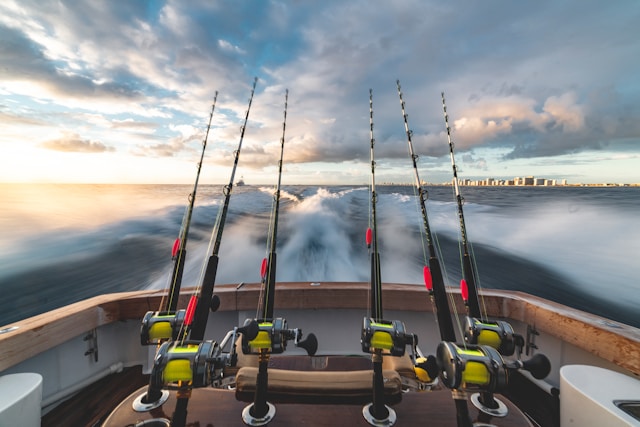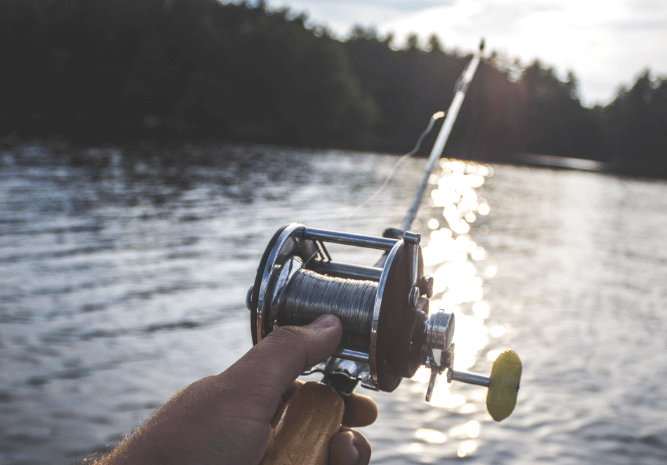Fly fishing, a sport and art form cherished by many, has a storied and often debated history. The core question, “When was fly fishing invented?” and “Who invented fly fishing?” are points of fascination for anglers and historians alike. This article delves into the origins of fly fishing, tracing its evolution through time and across continents.
The Earliest Beginnings
The quest to understand when fly fishing was invented takes us back to ancient times. The earliest known references to fly fishing come from the Roman period. However, it’s widely believed that the practice began before these documented instances. As we explore who invented fly fishing, it becomes apparent that it was not the brainchild of a single individual but rather a technique that evolved over time.
Ancient Rome and Macedonia:
- Aelian’s “Natural History” (2nd-century Roman text) describes Macedonian anglers using artificial flies on the Astraeus River;
- This account is one of the earliest recorded instances resembling fly fishing;
- It provides insight into the practices of ancient anglers but does not represent the entire history of fly fishing.
Medieval Contributions
The timeline leaps forward to the medieval period, where we see significant advancements in fly fishing techniques. This era brings us closer to answering, “When was fly fishing invented?” as we see more detailed descriptions and illustrations.
The Treatise of Fishing with an Angle:
- “The Treatise of Fishing with an Angle,” published in 1496 by an anonymous English author, stands as a significant milestone in medieval fly fishing history;
- It is one of the oldest and most complete accounts of fishing with a fly in England;
- The treatise includes valuable guidance on crafting essential components such as rods, lines, hooks, and artificial flies;
- This historical work highlights the importance of fly fishing within the broader context of historical fishing practices and serves as a crucial bridge between ancient references and the refined fly fishing techniques that would emerge in later centuries.
The Evolution in England
The 17th and 18th centuries represent a transformative period in the history of fly fishing, playing a pivotal role in shaping the modern techniques and equipment associated with this angling method. This era holds a key position in unraveling when fly fishing was invented in its more recognizable form, marking significant advancements that continue to influence contemporary practices.
Izaak Walton and Charles Cotton:
- “The Compleat Angler,” first published in 1653 by Izaak Walton and later enhanced by Charles Cotton, stands as a cornerstone in the history of fly fishing;
- This iconic book provides a comprehensive and enduring record of fly fishing techniques and fly tying methods;
- The contributions within its pages offer detailed insights into the evolving art of fly fishing during the 17th century, solidifying its place in the annals of angling history.
The Development in America

On the other side of the ocean, in America, we go to learn more about the history of fly fishing and find out when this new way of fishing became popular there. What America did to help fly fishing grow is an interesting and full of new ideas and changes part of the sport’s history.
American Contributions:
- American anglers played a pivotal role in the development of fly fishing by adapting and innovating upon English techniques to suit the unique environments and conditions found in the United States;
- Their creative contributions significantly contributed to the sport’s evolution and expansion, making fly fishing in America a distinctive and influential part of the angling world.
Modern Fly Fishing
The 19th and 20th centuries were a turning point in the history of fly fishing. They saw huge changes that made the sport what it is today. In this time of change, big steps forward were made in technology and gear that brought fly fishing into the modern era.
Technological Advances:
- The development of fly fishing in the modern era was marked by significant progress in rod technology. It began with the introduction of split bamboo rods, which offered a lighter and more responsive alternative to the traditional wooden rods. This innovation transformed the angler’s experience, allowing for more delicate presentations and improved casting accuracy. Subsequently, fiberglass and, eventually, graphite rods emerged, each offering its own set of advantages, such as increased strength, flexibility, and sensitivity. These advancements in rod materials revolutionized the sport and provided anglers with a wide range of options to suit their preferences and fishing conditions;
- Along with improvements in rod technology, reel and line design also helped bring fly fishing into the modern era. Modern reels with more advanced drag systems were made, which give anglers more control over their line and make it easier to handle bigger fish. At the same time, synthetic materials started to replace silk lines, making lines that were stronger and better suited to different fishing conditions. These improvements not only made fly fishing gear more useful, but they also gave players more options, so they could go after more types of fish and fish in more situations.
Fly Fishing Today
Fly fishing has evolved into a global sport with many techniques and styles. Fly fishing’s timeless appeal and adaptability are reflected in this modern version, which blends tradition with innovation.
Diverse Techniques and Styles:
- Fly fishing today is a dynamic and diverse pursuit that spans continents and encompasses an array of specialized techniques. Anglers worldwide have adapted and refined fly fishing to suit their unique environments and target species, resulting in a rich tapestry of regional styles and approaches;
- From the delicate dry fly presentations of trout streams in the Rockies to the powerful saltwater battles with tarpon in the Florida Keys, each locale and target fish species has inspired its own set of techniques and strategies. This variety makes sure that fly fishing stays fun and interesting for players of all backgrounds;
- Beyond the geographical diversity, fly fishing today also extends its reach to various disciplines, including freshwater and saltwater angling, competitive fly fishing tournaments, and conservation-focused practices like catch and release. These multifaceted dimensions underscore the versatility and adaptability of fly fishing in contemporary angling culture.
Conclusion
Exploring the question, “When was fly fishing invented?” and “Who invented fly fishing?” reveals a rich tapestry of history and innovation. From its ancient beginnings to modern advancements, fly fishing remains a beloved sport that continues to evolve. Whether you’re a seasoned angler or a curious historian, the journey through the history of fly fishing is as engaging and varied as the sport itself.
FAQ
Fly fishing has ancient origins, with the earliest references dating back to the 2nd century. However, it evolved significantly over centuries.
Fly fishing was not invented by a single person but developed over time, with contributions from various cultures and individuals.
Fly fishing evolved from simple ancient techniques to a sophisticated sport with specialized equipment and diverse techniques.
“The Compleat Angler” greatly influenced fly fishing, providing comprehensive knowledge and promoting the sport’s art and ethos.
Modern advancements include the development of graphite rods, advanced reel designs, and synthetic materials for lines and flies.



